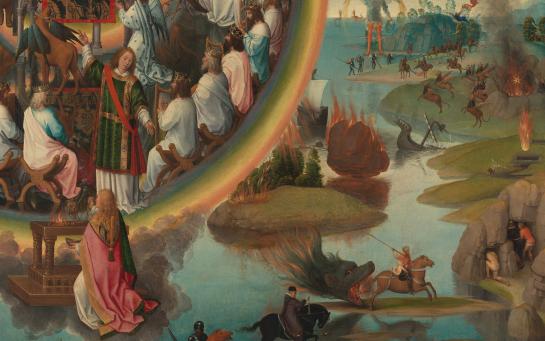
What if you could explore every brushstroke of a masterpiece from your screen? VUB spin-off Universum Digitalis uses cutting-edge technology to digitise artworks in stunning detail. Their work bridges innovation and heritage, making masterpieces globally accessible and aiding research and restoration.
The challenge: Masterpieces are fading fast
Iconic artworks from masters like Hans Memling and Jan van Eyck are central to our cultural heritage, but they face multiple threats: ageing, fragility, limited accessibility, and the complexity of restoration. At the same time, researchers and art lovers around the world struggle to study these masterpieces in detail due to geographic, physical, or institutional limitations.
The solution: Preserving art with gigapixels and AI
That’s where Universum Digitalis, a spin-off from VUB's Image Processing and Computer Vision group at the Department of Electronics and Informatics (ETRO), steps in. This ICT company develops innovative solutions for multimedia management and distribution via mobile apps and web-based platforms. Founded in 2008 and led by Prof. Frederik Temmermans, the company uses state-of-the-art imaging technologies to create gigapixel-level digital versions of paintings, which are so detailed that individual brush hairs are visible.
These high-resolution reproductions, captured with specialised imaging hardware and software, are made available via web platforms and mobile apps. Museums can now provide interactive, zoomable experiences of their collections, and art historians get digital access to artworks as if examining them under a microscope without risking damage to the originals.
“It is important that we continue to use advanced technologies to protect and make historical artworks available to the general public.” — Prof. Frederik Temmermans (co-founder Universum Digitalis)
The impact: Transforming how we access, restore, and study art
For the Closer to Memling Experience at Museum Sint-Janshospitaal, Universum Digitalis brought Memling’s works to life in immersive digital formats. Their technology also supported the Louvre’s restoration of Van Eyck’s The Virgin of Chancellor Rolin, offering a precise before-and-after visual record.
The result? Greater public access, powerful tools for restoration, and new opportunities for research. Universum Digitalis' work has earned international awards, and continues to help digitise the oeuvre of other masters.
From canvas to code, Universum Digitalis is redefining how we preserve and experience art.
